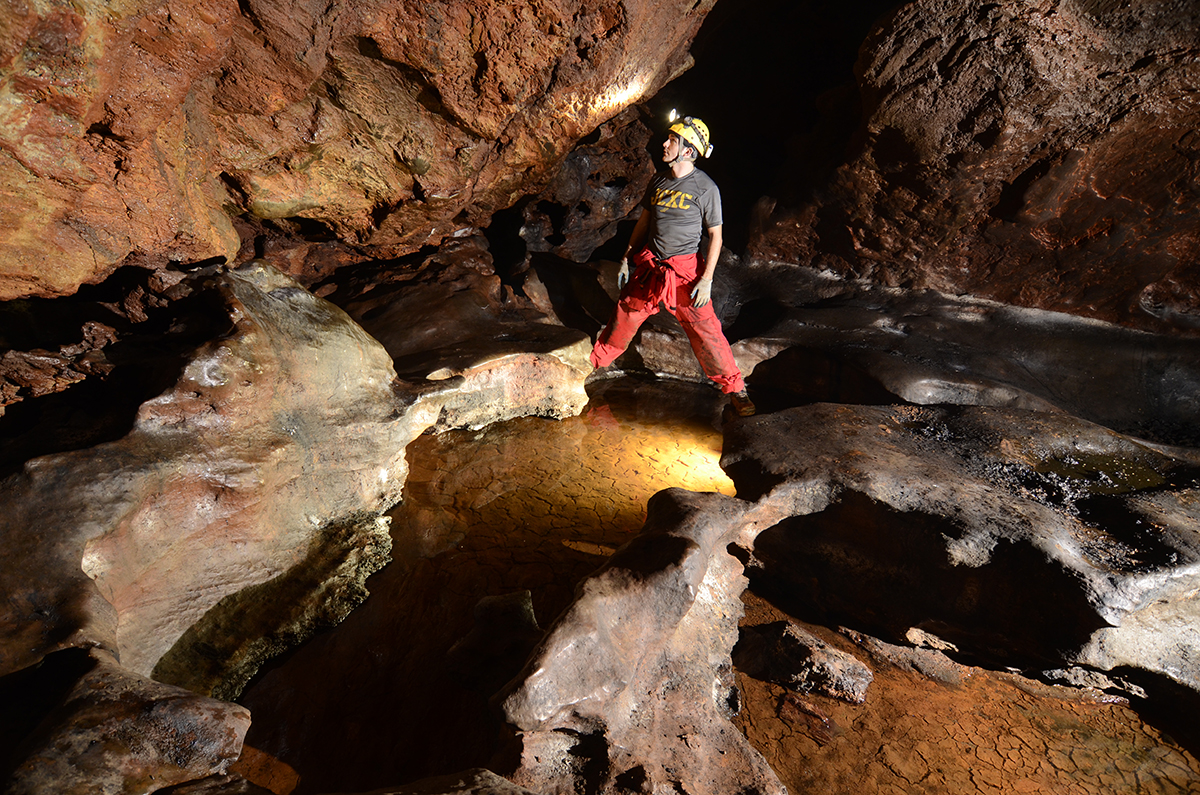Unique iron ore caves of Brazil to be studied by UA geoscientists
 Ceth Parker, a Ph.D. student in the Integrated Bioscience Graduate Program, is seen here studying BIF caves in Brazil in 2016.
Ceth Parker, a Ph.D. student in the Integrated Bioscience Graduate Program, is seen here studying BIF caves in Brazil in 2016.
The National Science Foundation (NSF) has awarded $400,000 to three of our researchers in the Department of Geosciences to continue their groundbreaking research on cave formation. The scientists are studying communities of microorganisms and their role in the formation of unique iron ore caves, which make up only about 1 percent of caves worldwide.
A majority of caves are found in limestone rock. They are formed by water flowing through the ground which erodes limestone deposits, leaving behind a series of tunnels and caverns. However, banded iron formations, or BIFs, are rocks formed from iron deposits in ancient oceans. These iron-rich rocks are extremely resistant to the type of erosion that forms most caves, with surfaces that can be more than a billion years old. Yet, somehow, the BIFs in Brazil contain thousands of caves.
Home to endangered animal species
“The identification of cave forming processes in BIF is significant as it dramatically expands the environments in which caves can form,” says Dr. Hazel Barton, director of the integrated bioscience program at UA. “These caves provide critical subterranean habitats for many rare and endangered animal species. There is also a strong correlation between the location of these BIF caves and the presence of iron ores of global economic significance, providing the source material for the production of steel.”
Barton, along with Department of Geosciences faculty members, Dr. John Senko, an associate professor, and Dr. Ira Sasowsky, a professor, has been studying the caves in Brazil for the last seven years.
The team’s preliminary research shows these BIF caves have high populations of active microbial communities. The researchers theorize that the microbes use iron within the rock to respire, in a similar way to how humans use oxygen. This respiration causes the rust-like iron oxides that make up the cave to become soluble. This theory is supported by the discovery of dissolved iron in water within the cave, as well as evidence that the iron is dissolving behind the walls, causing the cave to collapse in on itself. The team now believes the flow of groundwater simply carries off the iron oxides after microbes do all the work of chewing through the BIF. Over time, this process could be responsible for the voids in the walls of the cave, which eventually meet to form a new cave that is large enough to be entered by humans.
With the continued funding from the NSF, the team will again take a group of students to Brazil to study the BIF caves firsthand. There, they will continue to test the hypothesis that the activities of microorganisms are responsible for the formation of BIF caves.
They will test their hypothesis both in the field and in a lab, and models will be used to show how iron is oxidized and swept away. The data gathered will show potential cave forming processes across a range of scales, from microscopic to regional, and will help to determine the role that microbes play in iron cave development.
► Story by Erica Cantrell
► Media contact: Lisa Craig, 330-972-7429 or lmc91@uakron.edu.
